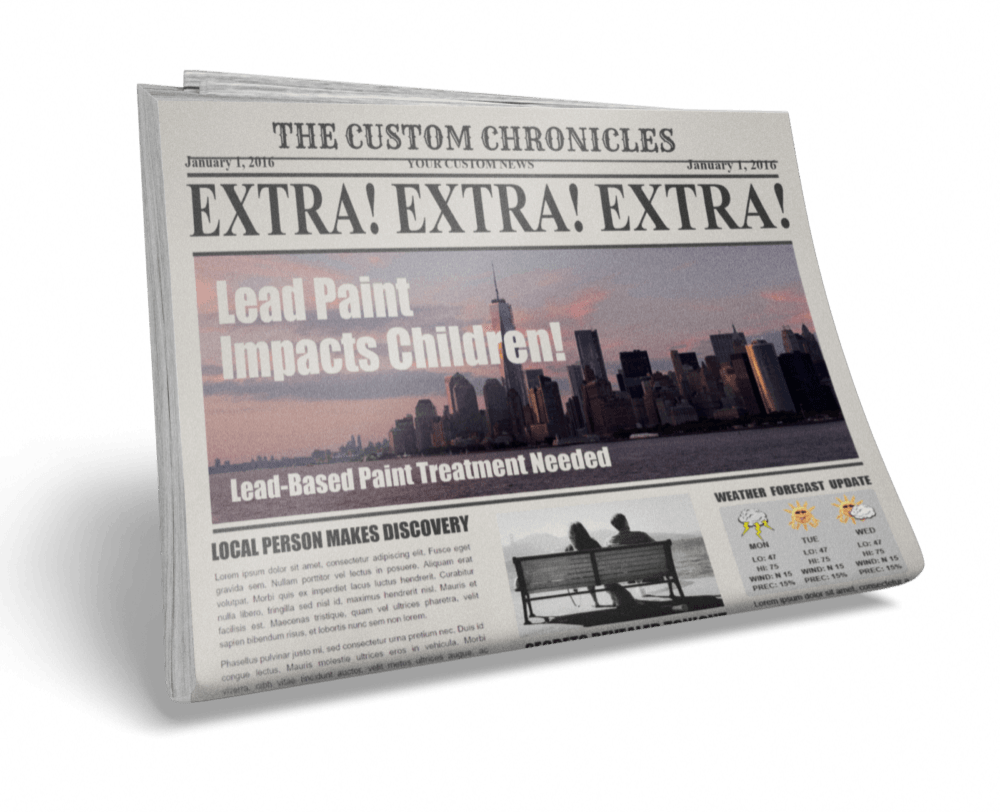 Do you live in a neighborhood with homes that were built before 1978? If you do, you may want to keep an eye open for renovation projects in neighboring homes. especially if you have young children.
Do you live in a neighborhood with homes that were built before 1978? If you do, you may want to keep an eye open for renovation projects in neighboring homes. especially if you have young children.
There are strict laws about renovating homes containing lead paint. Are your neighbors following them? Lead paint liability recently became the focus of a lawsuit in Orleans Parish, New Orleans, Louisiana, when a couple with a young child complained that their neighbor's renovation covered their own property with white dust -- white dust containing lead paint, they say.
The defendant is accused of negligence for failing to address the lead paint on his property, failure to obtain a permit and various other counts. The plaintiffs are seeking damages because they say they were forced to dispose of some of their possessions, and their child is now being monitored for lead paint exposure. If he's found guilty, the suit could end up costing the defendant a great deal of money -- far more than it would have cost him to simply follow the law by obtaining permits and hiring a certified lead-based paint abatement contractor.
Following lead paint laws, obtaining permits and hiring a contractor who's been certified by the EPA to safely remove lead paint and lead paint debris, may at times feel like a hassle, but in the end it could save you from legal problems, financial liabilities and most importantly, eliminate the possibility of harming innocent children.
Lead Paint Liability: Durham Neighbors Discover Lead Paint in Yard
When you do a home renovation project, your lead paint liability goes beyond protecting your own home. Without careful planning, your project might end up getting into your neighbors houses and yards. This puts your project at risk for liability, and even worse, can create a serious health hazard for other families on your block.
Unfortunately, these health issues recently became a reality for neighbors in Durham, North Carolina. The trouble started innocently enough, when a house in the neighborhood got their property power washed. Unfortunately, the wash caused lead paint chips to fly from the home into nearby properties. Over six months later, the problem continues.
CBS interviewed nearby homeowners Holly Dwan and Tiffany Graves about the problem. Between the two of them, Dwan and Graves have seven children. Testing on both neighbors' properties shows elevated levels of lead paint in their yards, and in Graves' house, inside the front door. Dwan's daughter tested positive for lead poisoning, but not at the elevated level of 5 mg per deciliter that mandates state help.
In response to the inaction from their neighbors, Dwan and Graves brought their neighbors, Roderick Barbee and Carl Richardson, to court. The judge ordered Barbee and Richardson to fix the problem with their home and change renovation companies. Unfortunately, Dwan and Graves will have to pay for their own cleanup and can't start until the neighbors' house is cleaned up. As a result, they're fighting for regulations protecting the safety of homes in renovation projects.
With the right planning and action, you can prevent ending up similar situation, or take swift action. If you're planning a project in a home with lead paint, working with a cleanup company will help you cover or dispose of the paint in a way that's safe for everyone. In the neighbors' situation, a lead paint company removal company can make your yard safe again and help you advocate to local organizations.
Lead Paint News Stories: Cleveland, Flint, and Others Still Suffer from Lead Poisoning
The ongoing tragedy in Flint, Michigan continues to make headlines as politicians refuse to fulfill what is one of their most basic duties; making sure citizens have clean water. However, Flint isn't some fluke. It's not the exception that proves the rule. It's just the most visible American city dealing with elevated lead levels in their water, and in their population.
According to The New York Times, Cleveland, Ohio has had similar problems for years. And they still aren't getting dealt with.
What Is Going On?
What happened is pretty clear, according to the coverage. In short, cities have stopped making lead a priority before all the contamination has been removed.
While we tend to think of lead in our paint, pipes, and other building materials as a problem of the past, it's still very much around. It was used for decades as the industry standard, and it's only within the past generation and change that lead has been phased out entirely. Unfortunately, cleaning lead up and getting rid of it is time-consuming, and expensive. As such, property owners, and even governments, have decided to leave the lead where it is. They'll get to it later, because if it just sits there it won't hurt anyone.
Fortunately, though, lead is being recognized as a serious threat once again. Governments, companies, and even private citizens have decided they've had enough of this heavy metal, and its toxic consequences. So, efforts to remove it completely, and safely, are becoming more common. If the efforts grow, it might even lead to a second wave of clearing, as old lead is stripped away, and properly disposed of where it won't harm future generations.
ECOBOND® is the nation’s leader in developing and distributing products that improve the protection of human health and safety from the hazards of lead in the home, workplace, and the environment. With over 15 years in patented and proven success, the ECOBOND® family of products have been extensively used in successfully treating lead hazards in over 11,000,000 tons of material while serving over 100,000 customers in the United States and Internationally.
To learn more visit www.EcobondPaint.com, view our lead paint treatment video or download our free Industry Report: http://www.LeadPaintRemovalReport.com
